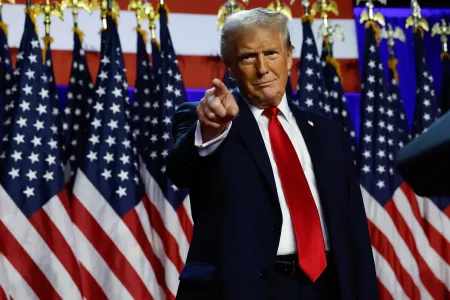OpenSea’s Reinvention: From NFT Marketplace to Crypto Trading Hub
In a remarkable turnaround story, OpenSea, once the dominant NFT marketplace that faced near-collapse during the digital art market crash, has successfully pivoted to become a comprehensive cryptocurrency trading platform. The company’s journey reflects the volatile nature of the crypto industry, where adaptation is essential for survival. Starting in mid-2022, the NFT market experienced a devastating 80% decline, causing OpenSea’s monthly revenue to plummet from a peak of $125 million in January 2022 to just $3 million by October 2023. This financial freefall came shortly after the company had achieved a $13.3 billion valuation that briefly made its cofounders billionaires. Adding to the company’s woes, upstart competitor Blur captured significant market share by offering zero trading fees and making creator royalties optional, leaving OpenSea in a precarious position as it struggled to maintain relevance in a rapidly changing landscape.
Facing this existential crisis, CEO Devin Finzer made the difficult decision to reset the company, laying off more than half of its 175 employees and offering voluntary severance to remaining staff who weren’t fully committed to rebuilding. “What was really tough was that a lot more people than I expected—some really good people—took that package,” Finzer reflects, revealing how the restructuring reduced OpenSea to just 60 employees and 10 contractors, most working remotely. The dramatic downsizing proved necessary, flattening the company’s structure and removing management layers so that every engineer directly contributed code. This painful transformation taught Finzer to reject the Silicon Valley convention of rapid hiring during growth periods, instead embracing a leaner approach that has become increasingly popular in the AI era. The restructuring also prompted a fundamental rethinking of OpenSea’s business model, with Finzer crediting his wife, Yu-Chi Lyra Kuo—a cryptocurrency investor with impressive academic credentials including studies at Princeton and Harvard Law—for the idea to transform OpenSea into a comprehensive crypto trading application, making her what he calls “a silent cofounder of OpenSea 2.0.”
The pivot has paid dividends, with OpenSea now facilitating trading across 22 different blockchains and capturing revenue from the booming memecoin market. In just the first two weeks of October 2025, the platform processed $1.6 billion in cryptocurrency trades and $230 million in NFT transactions, representing its highest volume in over three years and generating approximately $16 million in revenue through its 0.9% transaction fee. By aggregating buy and sell orders from decentralized exchanges like Uniswap and Meteora, OpenSea has positioned itself at the intersection of various crypto markets, embracing the trader axiom “Don’t fight the tape” as bitcoin soars and risk appetite returns to financial markets. While NFTs like Bored Apes have fallen dramatically in value (from $400,000 to $32,000), OpenSea has adapted to the industry’s shift toward memecoins and other speculative tokens. As Finzer pragmatically observes, “You can’t fight the macro trend,” so his strategy is to embrace the market’s current direction rather than cling to past business models.
The company’s struggles with Blur also taught Finzer valuable leadership lessons. After initially responding to Blur’s fee-free approach with a series of inconsistent policy changes regarding creator royalties, Finzer realized his consensus-driven leadership style wasn’t effective. “For some of these things, the only way you get better is by having the thing happen and failing your way through it,” he acknowledges, having learned to trust his instincts rather than yielding to external pressures. While OpenSea has found renewed momentum, Blur appears to have lost its edge, with monthly trading volume dropping from over $1 billion in early 2023 to just $92 million recently. The mysterious silence from Blur’s corporate accounts and its CEO since last spring suggests a possible retreat from the market, leading Finzer to observe that “In crypto, some people are there to get in and get out,” implying OpenSea’s commitment to long-term sustainability despite market fluctuations.
OpenSea’s new strategy addresses a significant gap in the crypto marketplace—no company has yet made it truly simple to trade the millions of tokens across different blockchains while maintaining self-custody of assets. While Coinbase offers about 300 tokens through its centralized exchange, this represents only a fraction of available cryptocurrencies, and the platform holds customers’ assets rather than enabling self-custody, a feature crypto enthusiasts value highly after exchanges like FTX collapsed with customer funds. OpenSea’s competitive advantage lies in making cross-chain trading accessible to everyday users while maintaining the simplicity that made its original NFT marketplace successful. Finzer aims to create an interface as intuitive as Coinbase or Robinhood while aggregating orders from decentralized exchanges where more technical traders operate. However, this approach comes with compliance considerations—unlike traditional financial institutions, OpenSea doesn’t perform know-your-customer (KYC) checks, instead using blockchain analytics to screen for sanctioned addresses and suspicious transactions, a stance Finzer defends as legally appropriate given the company’s non-custodial structure.
As OpenSea charts its new course, challenges remain. The company must balance serving both art-focused NFT enthusiasts and pure financial speculators, two communities with vastly different motivations. Finzer believes these worlds can “harmoniously live together” on the platform, though the tokens section of the site undeniably feels like a speculation-driven financial application. Regulatory uncertainty looms large—while the Trump Administration dropped previous SEC investigations into whether OpenSea operated as an unlicensed securities exchange, future administrations could revive such scrutiny. Additionally, competition in crypto trading is fierce with hundreds of exchanges globally and low barriers to entry. Finzer maintains that consistently delivering quality experiences builds brand trust that serves as a competitive moat, but crypto’s history suggests that dominance is rarely permanent. With an OpenSea token expected soon from an independent foundation and plans for a new mobile app, the company continues evolving while acknowledging it’s only “a fraction of the way” toward realizing its vision of becoming the definitive venue for trading all types of tokens—a remarkable reinvention for a company that stood at the brink of obsolescence just months ago.















